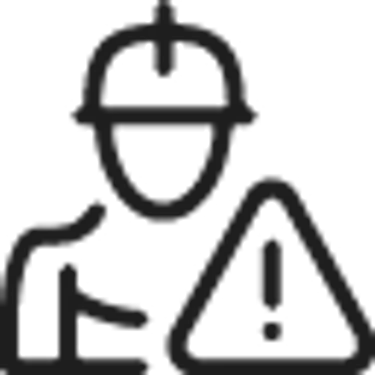Redispatch
In Germany, the redispatch process controls the use of generation plants and prevents the feed-in of energy from these plants from causing bottlenecks in the electricity grid. To do this, an electricity grid operator corrects the use of the generation plant previously planned by the operator (use of generation plants = dispatch / corrected use = redispatch).
Generation plants with an output of 100 kW or more must participate
The new process affects all system operators with electricity generation systems with an installed capacity of 100 kW or more, including emergency power generators and systems for self-supply, as well as all electricity grid operators in Germany.
Current implementation status
The Federal Network Agency (BNetzA) has set out the path from the transitional solution to the target process Redispatch 2.0 in Communication No. 8 of 04.02.2022 and Communication No. 9 of 03.05.2022. The grid operators are then called upon to test all the necessary processes and then transition to the target processes, which relates in particular to balancing.
We have successfully completed the operational tests with the transmission system operator responsible for us, 50Hertz Transmission GmbH, in accordance with BNetzA notification no. 8 and are therefore considered 'operational'. This was confirmed to the Federal Network Agency by 50Hertz Transmission GmbH.
In consultation with 50Hertz Transmission GmbH, the balancing processes in accordance with BNetzA determination BK6-20-059 (page 14) have been postponed for the time being due to the fact that no calls are currently expected in our grid area. As soon as these are introduced, we will inform the affected grid operators, suppliers and operational managers as well as the BDEW with a lead time of at least four weeks. Until then, balancing will continue to be carried out by the balancing group managers.
-

Report system
Operators of a system with an electrical output of at least 100 kW inform us about this system. In the case of a new system, a separate agreement is made so that participation in the redispatch takes place as soon as the system is commissioned if possible. Report the systems to [email protected]
-

ID assignment
We assign the TR and SR ID for a newly registered installation. You need these IDs for the system's data communication.
-

Commissioning a service provider
Data communication takes place via the Germany-wide RAIDA data hub using standardized and largely automated processes. For data communication in the redispatch process, we recommend the use of a service provider for the market roles of the dispatcher (EIV) and operator of the technical resource (BTR). You can find these service providers by searching the internet for "deployment manager". Many direct marketers also offer this service.
-

Transmission of master data
The person responsible for operations transmits the master data of the system to the grid operator via RAIDA. This includes in particular the IDs of the system and the selected billing model for call-offs as well as other data.
An important prerequisite for the functioning of the process is the registration of the system in the market master data register of the Federal Network Agency.
-

Ongoing redispatch process
After successful registration, the system takes part in the redispatch process.
This includes the provision of deployment schedules, if these are not to be created by us (planned value model) or the non-usability of the system by the person responsible for deployment for
- Maintenance periods
- Short-term downtimes
- Periods of in-house generation
If the system is called up, the control signal is usually sent to the system by us and financial compensation is then paid.
Dealing with existing installations
There are no exceptions for existing plants to participate in the redispatch process. If operators with a generation plant with a capacity of 100 kW or more have not yet been contacted by us to participate in the process, please contact us as soon as possible by email ([email protected]). We will clarify the further process together. Operators of a generation plant must report their plants to the connection grid operator in accordance with the statutory regulations.
Statutory regulations
Amendments to the German Energy Industry Act (EnWG) as a result of the Grid Expansion Acceleration Act (NABEG 2.0), which came into force in May 2019. The previous feed-in management requirements under the Renewable Energy Sources Act (EEG) and the Combined Heat and Power Act (KWKG) will be repealed and transferred to a uniform redispatch regime (Redispatch 2.0) in accordance with sections 13, 13a, 14 EnWG. The new redispatch process was introduced on October 1, 2021.
Redispatch process
The redispatch process is divided into various sub-steps. Once affected plants have been identified and IDs have been assigned to the plants, the data exchange to these plants begins via the Germany-wide data provider RAIDA.
The main steps of the new redispatch process, application aids, the implementation scenario and definitions of terms have been developed by BDEW and can be found on the BDEW website.
Important documents are
- Industry solution Redispatch 2.0 (data exchange, balancing, billing)
- Application help: Implementation scenario
- Application help: Resource ID (TR and SR ID)
- Detailed processes for grid operator coordination
In addition, there are various specifications from the Federal Network Agency on the new redispatch process:
- Determination procedure for balancing redispatch measures (BK6-20-059)
- Specification procedure for grid operator coordination in the implementation of redispatch measures (BK6-20-060)
- Specification procedure for the provision of information for redispatch measures (BK6-20-061)
- Communication on the adaptation of data formats for processing market communication
Question and answers
Who is affected by the new Redispatch process?
In general, the new process will affect all plant operators of generation plants with an installed output of 100 kW or more and all network operators whose electricity network these plants are connected to.
The data for these plants must also be provided without the individual plants being called up.
Are emergency power generators included in the new Redispatch process?
Yes, at least in the exchange of master data, there are no exceptions for emergency power generators and basic data must also be provided for these plants by the plant operator.
Why is the new Redispatch process being implemented?
The new process is being introduced in order to include power generation from renewable energy plants as early as possible in the network and power plant deployment planning and to keep the restriction of renewable energies as low as possible at the end.
When will the new Redispatch process start?
The new process will start on 1 October 2021. Separately from this, bilateral exchanges and, in particular, the allocation of SR and TR IDs will already begin beforehand.
Each connection network operator can also specify the start of the master data exchange of all affected plants in their network for their network operation. The earliest start for this is 1 July 2021.
In our network area, the exchange of master data via RAIDA starts on 16 August 2021.
What is RAIDA / Connect+?
In order to be able to technically implement the new Redispatch processes and, in particular, to manage data exchange throughout Germany, various network operators have founded the Connect+ implementation project.
The result of Connect+ is the RAIDA data platform, which will be used to exchange data between plant operators and operations managers with the network operators.
What data will have to be exchanged in the future?
As part of the Redispatch process, there are various categories of plant data that are exchanged between plant operators, operations managers and network operators.
This includes master data, which generally has to be exchanged once and then in the event of changes, as well as planning data, non-availability and real-time data, which are exchanged continuously. The individual data fields can be found in the specification for the provision of information by the Federal Network Agency (BK6-20-061).
How is data to be exchanged?
Data exchange between plant operators, operations managers and network operators takes place with RAIDA.
For information on how to use RAIDA, see:
https://netz-connectplus.de/
What are TR and SR IDs?
In the new Redispatch process, all affected technical plants receive resource IDs for unique identification.
There is one ID for the technical resource (TR ID) and another ID for the controllable resource (SR ID).
Technical resources are technical plants such as a CHP or a biomass plant. Each technical resource is assigned to exactly one controllable resource. Several technical resources can also be assigned to a controllable resource.
The definitions of terms can be found, for example, in the introduction scenario of the new Redispatch process from the BDEW (Federal Association of Energy and Water Industry).
For data exchange to work, these IDs must be coordinated between the plant operators, operations managers and network operators before the process starts.
Who assigns and allocates the resource IDs?
The TR and SR IDs are generally assigned to the individual plants by the connection network operator and coordinated with the plant operator.
The IDs are assigned by the BDEW and can be obtained from:
https://bdew-codes.de/
What are plant operators, operators of technical resources and operations managers?
The plant operator is a legal entity and can assume several roles. In many cases, all three roles are performed by the plant operator.
Plant operator (Anlagenbetreiber - AB)
Person responsible for the operation of the plant
Technical resource operator (Betreiber der technischen Ressource - BTR)
Person responsible for the operation of a technical resource. In the process, this may include the transmission of real-time data, the provision of ex-post data for determining the amount of energy to be accounted for or downtime.
Operations manager (Einsatzverantwortlicher - EIV)
This is the legal entity designated by the plant operator of generation, storage or consumption plant for the network operator, who, on behalf of the plant operator, conducts the necessary coordination with the respective instructor in accordance with Section 13(1) of the Energy Industry Act (EnWG).
Which power plants will be called up in the future?
The new process means that no significant changes to the call-up frequencies or sequence are expected.
The process optimises the call-ups of the previous Redispatch process and feed-in management, but does not change the basic system and the network bottleneck situation in the electricity network.
Are plant operators compensated after Redispatch call-ups?
With Redispatch call-ups, plant operators will be in the same economic position as if the intervention had not taken place. The compensation payments for call-ups depend on the type of plant.
What are the minimum factors?
Minimum factors are assigned to renewable energy and CHP plants and help keep the restriction of renewable energies and CHP plants as low as possible. Both plant types receive higher (calculative) prices in the redispatch process due to the minimum factors (factor 10 for renewable energies and factor 5 for CHP plants) and are therefore only called after other plants in the call-up sequence. However, it is not only the (calculated) price, but also the proximity to the bottleneck that is decisive for the call-up sequence of plants. The network operators determine on the basis of both variables for which plants are controlled to eliminate a network bottleneck.
Who can provide assistance with RAIDA registration?
If you have any questions about registering for RAIDA, please contact the Connect+ information team directly
What do I have to do if I cannot complete registration with RAIDA?
Registration is mandatory for all affected market partners. Shortly before the start of the new redispatch process, delays in registration are to be expected due to the very high number of registrations. However, these will be processed one after the other.
If these delays mean that you cannot start transmitting data to us until later, please let us know.
What alternative data transmission channels can be used instead of RAIDA?
In the Stromnetz Berlin grid area, data exchange for the redispatch process takes place exclusively via RAIDA. Alternatives such as the transmission of data via tables, e-mail or similar are not provided.
Which service provider can support me with redispatch tasks?
BDEW has compiled a list of service providers that currently take on redispatch tasks for third parties.
